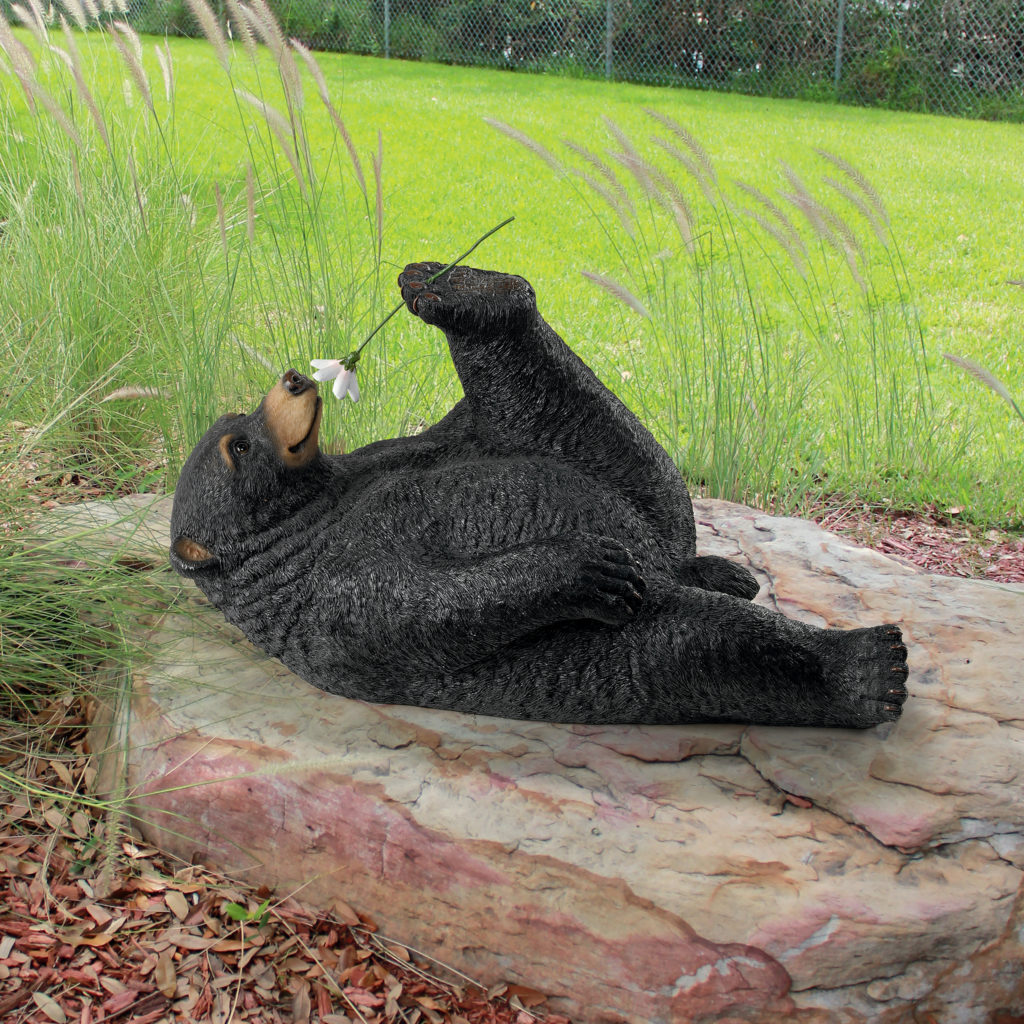“In every walk with nature, one receives more than he sees.” – John Muir

I’m Sue Mell and I’ve been crazy about bears ever since childhood. As child I saw black bears up close and (almost) personal. My family took annual summer car trips and one year we were camping in the woods of Yellowstone National Park. While driving along the 70-some miles of park roads we ended up in a traffic jam caused by a “sloth” (or sleuth, yep, that’s what they are called in a group) of black bears by the roadside, lounging in the shade and hoping for handouts of food from passing tourists (strictly against the rules nowadays). We all had to roll up our windows for safety and it was thrilling – and rather scary – with everyone slowly creeping along and taking photos, including me with my brand new Kodak camera, while we inched on by I got a few amateur pictures. It was a day to remember.
The Design Toscano buyers must have a love for black bears too; they have so many wonderful bear designs on offer in their Bear Statue collection. From frolicking cubs like the Mischievous Bear Cub Statue (KY69774) to lazy bears like Lemont the Loveable Lounger (KY1884) and the newest addition, our Postal Bear Mail Post Sleeve (KY1887).
A few things I’ve learned about these magnificent animals:
Black bears are the smallest of the three bears found in North America. (The other two being polar and grizzly bears.)
There are about 600,000 black bears in North America; 300,000 in the United States alone. The Louisiana black bear and the Florida black bear, a subspecies, are estimated to be around 3,000 and are listed federally as a threatened species.
Black bears have short, curved, non-retractable claws and excellent tree climbing ability. You’ll often find cubs up a tree.
American black bears are omnivores and eat roots, leaves, grass, fruit, berries, nuts, honey, insects, salmon, small mammals and carrion.
Most black bears begin hibernating in late November, depending on the weather and the area of the country. Males emerge first typically in February or earlier. Females can remain in the den until April especially when they have cubs. Though black bears heart and breathing rate are slowed down, they can still hear and even sense prey.
Spiritually black bears have several different meanings. Shamans see bears as a symbol of healing, as a symbol of strength, and inspiring courage to stand against adversity and act with confidence. The goddesses Artemis (Greek) and Diana (Roman) both had the bear as their symbol of support, physical and emotional healing, and respect. The Celts regarded the bear as a sign of the sun.
I have had a bear cub statue from Design Toscano in my garden that for years has been hung on a tree so he looks like he’s climbing up Yonva, the Climbing Bear Sculpture (NG33988). He has startled a more than few neighbors and passersby into thinking he was real. But the most charming bear I have ever seen is a new statue for summer: Stop and Smell the Flowers (QM16036) is a sweet black bear cub rolling on his back smelling a posey. He might not scare the visitors away but it’s too loveable and novel to pass up.
For more information on black bears in nature see: www.discoverwildlife.com; www.defenders.org; www.bear.org





